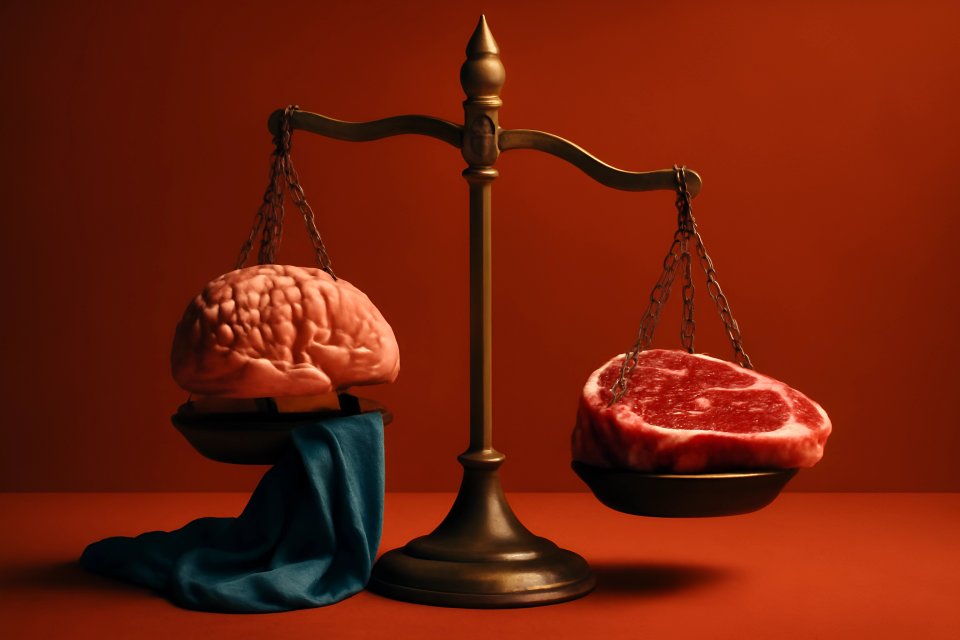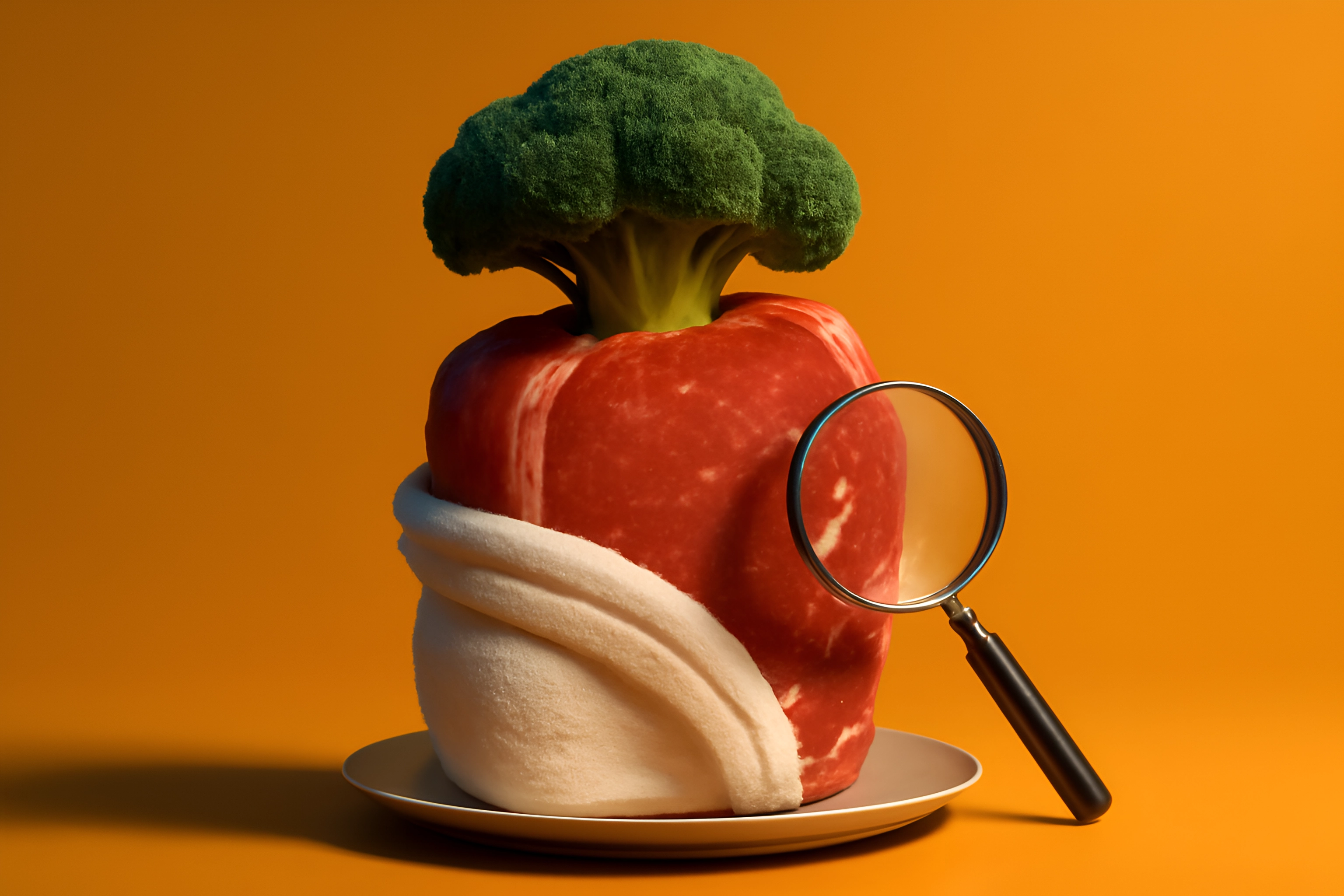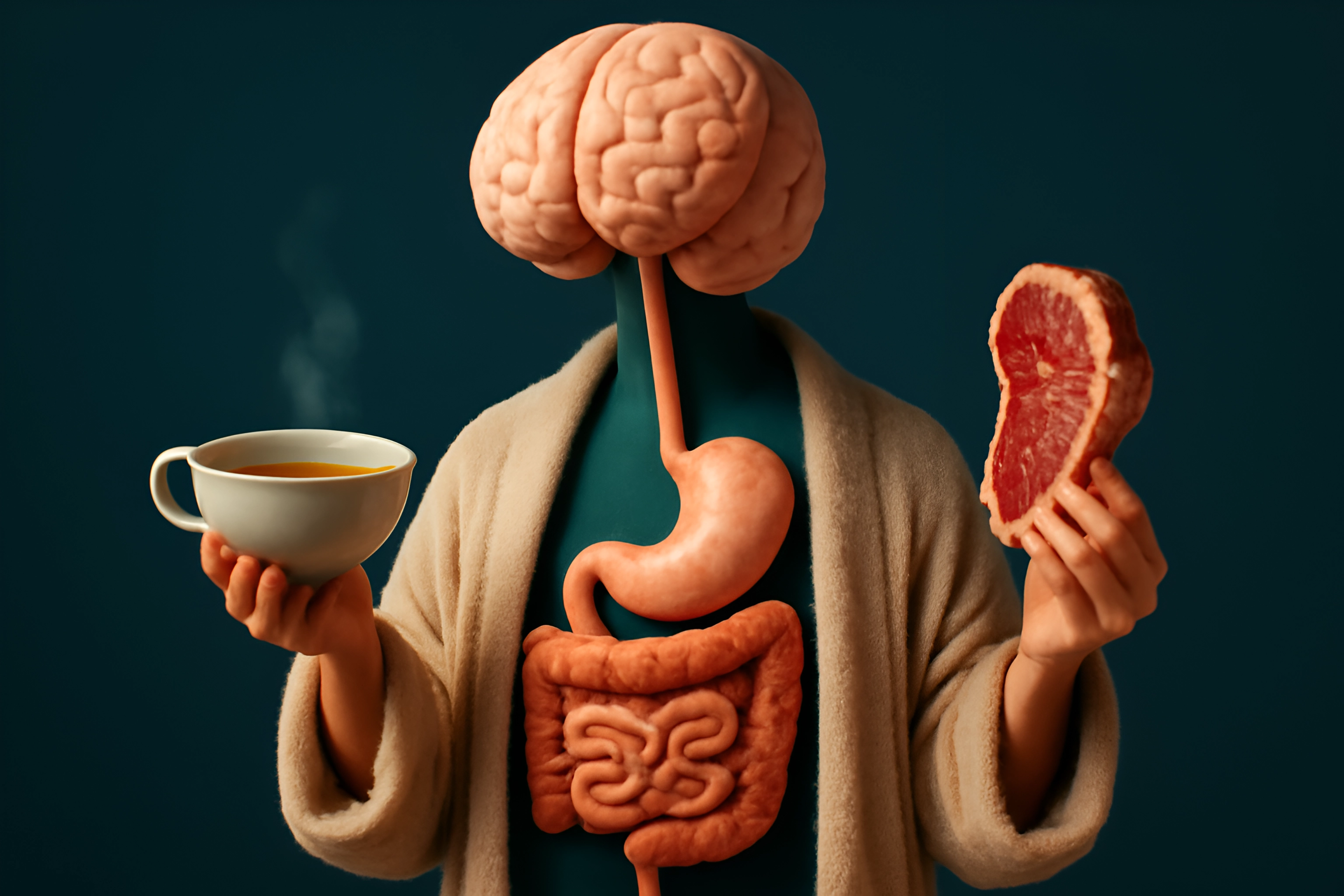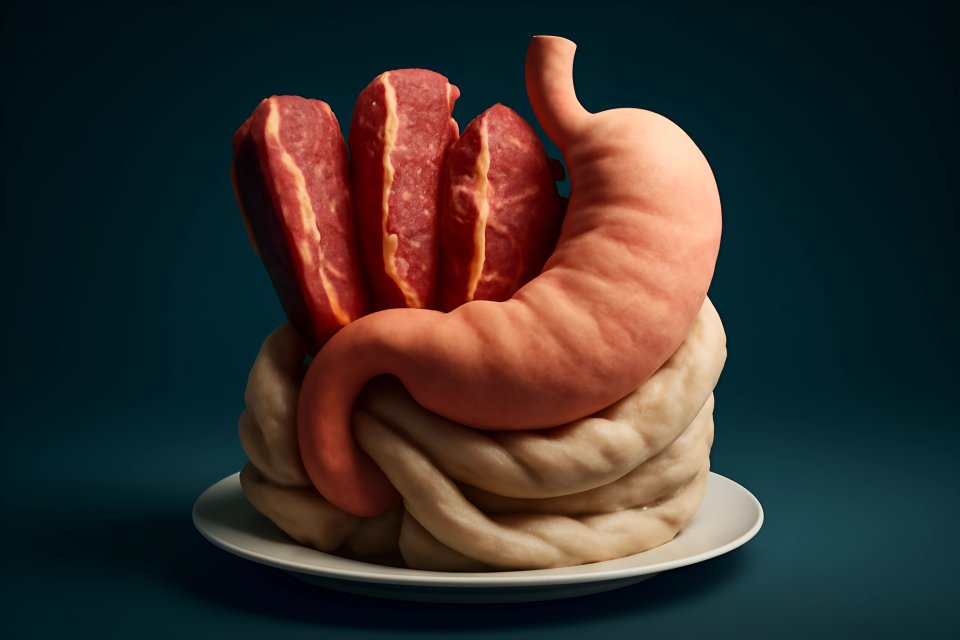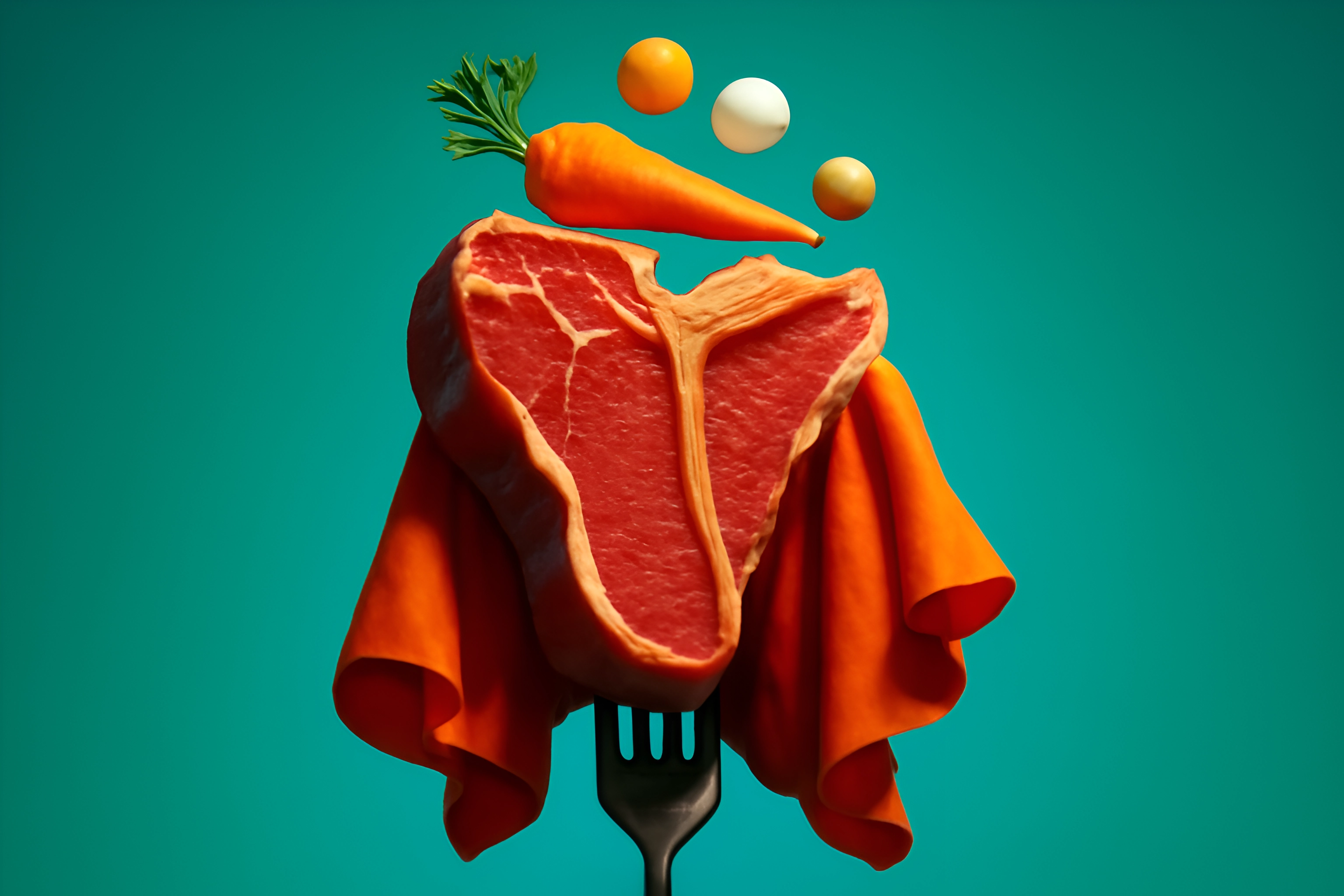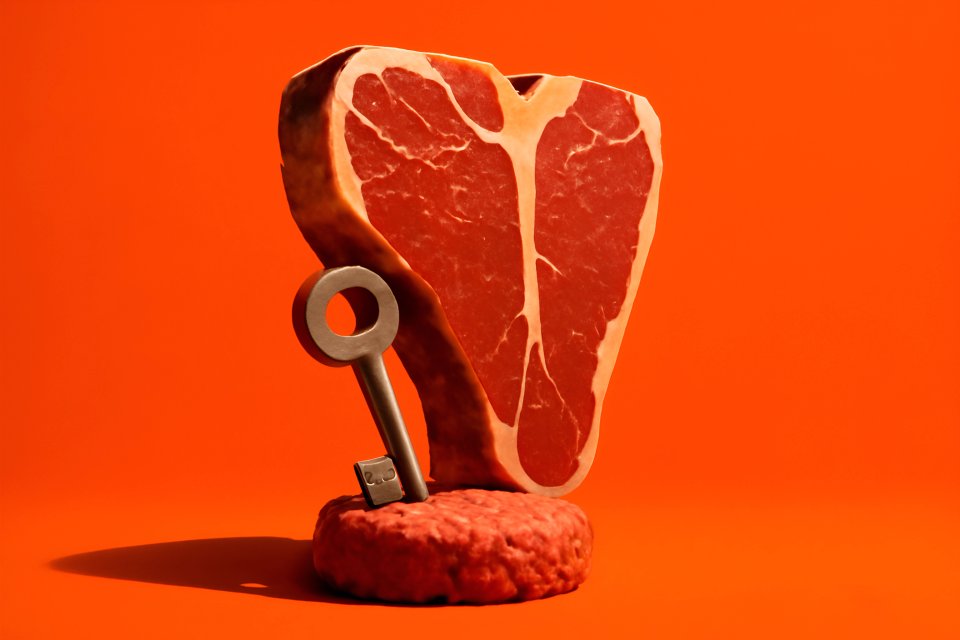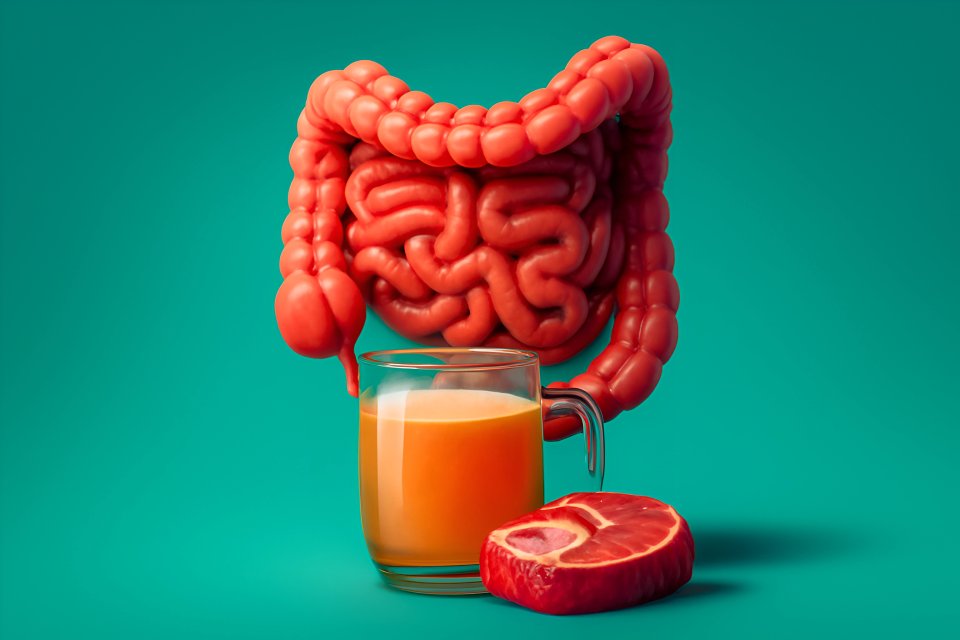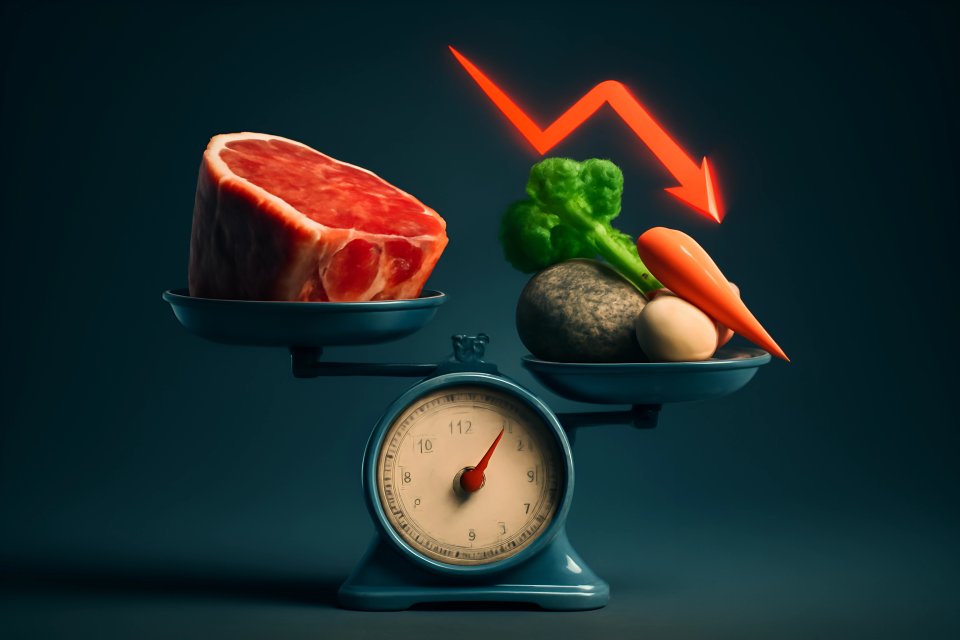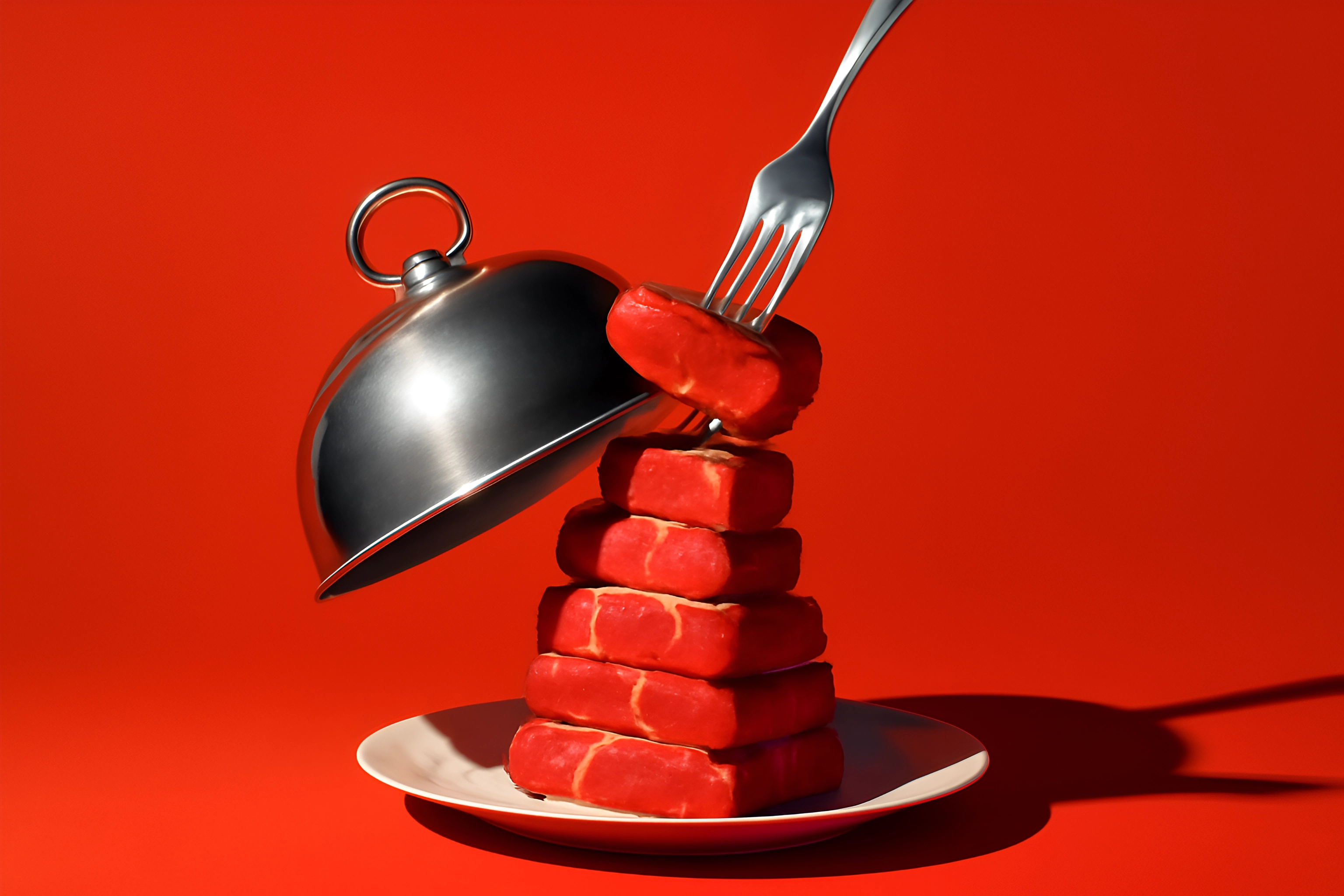
Feeling trapped by chronic pain, brain fog, or digestive distress? You’re not alone. For many, the root cause is a silent, simmering inflammation that sabotages your health from the inside out, turning your own body into a battlefield.
What if you could call a ceasefire? The carnivore diet isn't just another eating plan; it's a targeted healing protocol designed to starve inflammation at its source. But here’s the secret: not all carnivore meals are created equal when it comes to extinguishing that fire.
This guide isn't just a list of recipes. It’s your blueprint for crafting nutrient-dense, inflammation-reducing carnivore meals that help you reclaim your health and vitality. We'll uncover the 'why' behind each ingredient and provide simple, delicious recipes to put this powerful knowledge into practice, starting today. These are the ultimate carnivore recipes for inflammation reduction that will transform your plate into your most powerful tool.
Why a Carnivore Diet Reduces Inflammation
Have you ever wondered why you feel better when you simplify? The carnivore diet’s power lies in its radical simplicity, systematically removing the plant-based irritants that constantly provoke your immune system. Compounds like lectins and oxalates, found in many plants, can act like tiny papercuts to your gut lining, creating the "leaky gut" that allows inflammatory particles into your bloodstream.
By focusing exclusively on animal foods, you provide your body with a much-needed break from this constant assault. This dietary reset allows your gut, the command center of your immune system, to finally begin the repair process. Studies show that eliminating these dietary triggers is a critical first step in healing intestinal permeability and calming systemic inflammation.
But this approach is about more than just removal; it's about strategic replacement. Animal foods are packed with the most bioavailable forms of critical nutrients—heme iron, vitamin B12, zinc, and retinol—that your body can use immediately for cellular repair. You’re not just stopping the damage; you’re supplying the elite construction crew needed to rebuild a stronger, more resilient you.
The Pillars of an Anti-Inflammatory Carnivore Meal
To truly harness the healing power of this diet, you must build your meals on four foundational pillars. The first and most critical is a focus on Omega-3 Fatty Acids. These fats, particularly the EPA and DHA found abundantly in wild-caught fatty fish, are the ultimate anti-inflammatory agents, directly signaling your body to resolve inflammation. A single serving of wild salmon can provide over 1,500 mg of omega-3s, which have been shown to significantly lower inflammatory markers like C-reactive protein.
The second pillar is Glycine and Collagen. These are the building blocks for your body's connective tissues, including your gut lining, joints, and skin. Sourcing these from slow-cooked meats, bone broth, and skin-on cuts provides the raw materials needed to repair a compromised gut barrier and soothe aching joints from the inside out.
Finally, you must prioritize Fat-Soluble Vitamins (A, D, E, K2) and High-Quality Sourcing. Nutrients like the preformed Vitamin A found in beef liver are potent immune regulators, while choosing grass-fed beef over grain-fed ensures you get more anti-inflammatory fats and antioxidants. This isn't about being a food snob; it's about recognizing that the health of the animal directly translates to the healing power of the food on your plate.
The Omega-3 Powerhouse: Pan-Seared Salmon with Ghee
Anti-Inflammatory Spotlight
This meal is a true inflammation reducing carnivore meal. The star is wild-caught salmon, which boasts an incredibly high concentration of the marine omega-3s EPA and DHA. Unlike plant-based omega-3s, these are in the exact form your body needs to produce resolvins—compounds that actively turn off the inflammatory process. We cook it in grass-fed ghee, a pure butterfat that provides butyrate, a short-chain fatty acid that nourishes gut cells and reduces intestinal inflammation.
Ingredients
- 6 oz wild-caught salmon fillet, skin-on - 1 tbsp grass-fed ghee - Redmond Real Salt to taste
Instructions
1. Pat the salmon fillet completely dry with a paper towel. This is the key to crispy skin.
2. Season the flesh side generously with salt.
3. Heat the ghee in a cast-iron or stainless-steel skillet over medium-high heat until it shimmers.
4. Place the salmon skin-side down and press gently with a spatula for 10 seconds to ensure full contact.
5. Cook for 4-6 minutes, without moving it, until the skin is golden brown and releases easily from the pan.
6. Flip the fillet and cook for another 1-2 minutes on the other side for a perfect medium-rare.
Pro-Tip
Always choose wild-caught salmon over farmed. Farmed salmon has a much higher ratio of inflammatory omega-6 fats due to its unnatural grain-based diet, which can negate the anti-inflammatory benefits you’re seeking.
The Gut-Healing Hero: Slow-Cooker Shredded Beef with Bone Broth
Anti-Inflammatory Spotlight
This recipe is a masterclass in gut repair. The slow-cooking process breaks down the tough connective tissue in the chuck roast, transforming it into gelatin, glycine, and proline. These amino acids are the literal building blocks needed to seal a leaky gut and strengthen the intestinal wall. Cooking it in bone broth doubles down on this effect, creating a super-saturated, collagen-rich meal that soothes the entire digestive tract.
Ingredients
- 3 lb grass-fed chuck roast - 4 cups high-quality beef bone broth - 2 tsp Redmond Real Salt
Instructions
1. Place the chuck roast in the bottom of a slow cooker.
2. Pour the bone broth over the roast and sprinkle with salt.
3. Cook on low for 8-10 hours, or on high for 4-5 hours, until the meat is fall-apart tender.
4. Remove the roast from the slow cooker and shred it with two forks.
5. Return the shredded meat to the broth to soak up the juices. Serve warm.
Pro-Tip
Don't discard the cooking liquid! This broth is now a gelatinous, nutrient-dense elixir. Sip it on its own or use it as a base for your next soup to get every last drop of healing goodness.
The Nutrient-Density King: "Hidden Liver" Beef Patties
Anti-Inflammatory Spotlight
This is one of the most powerful nutrient dense carnivore recipes you can make. Beef liver is packed with preformed Vitamin A (retinol), a crucial nutrient for regulating your immune system and taming inflammation. A single ounce of beef liver contains over 100% of the RDI for Vitamin A and B12, nutrients that are absolutely essential for energy and cellular repair. By mixing it with ground beef, you get all the benefits without the overpowering taste, making it a perfect gateway to organ meats.
Ingredients
- 1 lb 80/20 grass-fed ground beef - 3-4 oz grass-fed beef liver, finely minced or grated while frozen - 1 tsp Redmond Real Salt
Instructions
1. If your liver is fresh, place it in the freezer for 15-20 minutes to firm up. This makes it much easier to grate or mince.
2. In a large bowl, combine the ground beef, minced liver, and salt.
3. Mix gently with your hands until just combined. Do not overwork the meat.
4. Form the mixture into 4-5 equal-sized patties.
5. Cook the patties in a hot cast-iron skillet with tallow or ghee for 3-4 minutes per side, until a nice crust forms.
Pro-Tip
Start with a lower ratio of liver to ground beef (e.g., 1:8) if you're new to the taste. You can gradually increase the amount as your palate adapts.
The Joint-Soothing Snack: Crispy Chicken Wings with Tallow
Anti-Inflammatory Spotlight
The magic here comes from the chicken skin and joints, which are loaded with collagen and cartilage. When cooked properly, these components provide the building blocks your body uses to maintain and repair its own cartilage. Cooking them in stable, healthy beef tallow instead of inflammatory vegetable oils is a critical switch. Tallow is rich in stearic acid and won't oxidize at high heat, ensuring your snack is purely anti-inflammatory.
Ingredients
- 2 lbs pasture-raised chicken wings - 2 tbsp melted beef tallow - 1.5 tsp Redmond Real Salt
Instructions
1. Preheat your oven to 425°F (220°C).
2. Pat the chicken wings completely dry with paper towels. This is non-negotiable for crispy skin.
3. In a large bowl, toss the wings with the melted tallow and salt until evenly coated.
4. Arrange the wings in a single layer on a wire rack set inside a baking sheet.
5. Bake for 40-50 minutes, flipping halfway through, until the skin is golden brown and crispy.
Pro-Tip
For extra crispy wings, you can add a "dry brine" step. After patting the wings dry, season them with salt and let them rest uncovered on a wire rack in the refrigerator for at least 4 hours, or up to overnight. This draws out excess moisture before cooking.
Pro-Tips for Maximizing Your Anti-Inflammatory Results
Sourcing Matters
Choosing quality over quantity is not a luxury; it's a strategy. The nutritional difference between a grass-fed steak and a conventional one is staggering. Grass-fed beef contains up to five times more omega-3s and is richer in antioxidants that fight oxidative stress.
This principle extends to all animal products. Pasture-raised eggs have higher levels of Vitamin E and omega-3s, and wild-caught fish have a vastly superior fatty acid profile compared to their farmed counterparts.
You are investing in your health with every bite. Seek out local regenerative farms, join a meat CSA, or find a butcher who can tell you exactly where your food came from. This single step will amplify the healing potential of every recipe you make.
Master Your Cooking Methods
How you cook your food is just as important as what you cook. High-heat charring and grilling can create inflammatory compounds like heterocyclic amines (HCAs) and advanced glycation end-products (AGEs). While a perfectly seared steak is a cornerstone of this diet, balance is key.
Embrace low-and-slow cooking methods like braising, stewing, and slow-cooking. These gentle techniques are superior for breaking down tough connective tissues into healing gelatin and preserving delicate nutrients. According to a study on cooking methods, boiling and steaming retain more omega-3s in fish compared to frying or grilling.
When you do use high heat for searing, use a stable fat like tallow, ghee, or lard. These fats have high smoke points and are less prone to oxidation, protecting you from unnecessary inflammatory damage.
The Importance of Fat
Fat is not just for flavor; it is your primary fuel source and a powerful tool for metabolic health. On a carnivore diet, aiming for a fat-to-protein ratio of around 2:1 by grams (or 70-80% of calories from fat) is crucial for energy, satiety, and hormonal balance. This high-fat intake keeps your blood sugar stable, preventing the inflammatory spikes associated with glucose metabolism.
Don't fear the fat on your steak; embrace it. Add pats of butter to your meat, enjoy crispy rendered fat, and incorporate fatty fish and egg yolks regularly. According to experts, getting enough fat is one of the most critical factors for long-term success and feeling your best on the carnivore diet.
Prioritize high-quality fats from grass-fed and pasture-raised animals. These fats contain a better balance of fatty acids and more fat-soluble vitamins, turning your fuel source into a therapeutic tool.
Hydration and Electrolytes
When you remove carbohydrates, your body's way of handling water and minerals changes dramatically. This makes proper hydration and electrolyte management non-negotiable for keeping inflammation at bay. Dehydration itself is a physiological stressor that can increase inflammatory markers.
Salt is not the enemy; it is an essential mineral. You will need to consciously add more high-quality, unrefined salt (like Redmond Real Salt) to your food and water to maintain proper fluid balance. Many carnivores find they need 1-2 teaspoons of salt per day to feel their best.
Potassium and magnesium are also vital. Bone broth is an excellent source of these minerals. If you experience cramps, fatigue, or heart palpitations, you may need to supplement with a clean, sugar-free electrolyte powder to ensure your cells are functioning optimally.
Your Questions on Healing with Carnivore, Answered
How long does it take to see a reduction in inflammation on a carnivore diet?
While every body is different, many people report feeling a noticeable shift in just a few weeks. Initial changes often include reduced bloating and joint pain as the body is relieved from constant dietary irritants. For deeper, more chronic inflammatory issues, the healing process can take several months as your gut lining repairs and your immune system recalibrates.
The key is consistency. The adaptation period can be challenging, but sticking with it allows your body to make profound changes. Within 30 to 90 days, many see significant improvements in skin conditions, autoimmune symptoms, and overall energy levels, which are all signs that systemic inflammation is decreasing.
Patience is your ally on this journey. You are not just changing your diet; you are fundamentally changing your biology and unwinding years of damage. Trust the process.
Can I use spices in these anti-inflammatory recipes?
For the greatest therapeutic benefit, it is highly recommended to start with only salt for the first 30-60 days. Many spices are derived from plant seeds, bark, or nightshades, which can contain compounds that are inflammatory for sensitive individuals. An initial strict elimination period gives you a clean baseline to truly assess how your body feels without any potential irritants.
After this initial phase, you can begin to cautiously reintroduce single-ingredient, high-quality spices like thyme or rosemary. Pay close attention to how you feel for 72 hours after introducing a new spice. If you notice any return of symptoms—joint pain, brain fog, digestive upset—you have your answer.
For those with severe autoimmune conditions, it may be best to avoid spices long-term. The goal is to remove every possible trigger to give your body the absolute best chance to heal.
Are organ meats necessary for reducing inflammation?
While you can certainly reduce inflammation without them, organ meats are the ultimate accelerator for healing. Think of them as nutritional power-ups. Beef liver, for example, is the most concentrated source of preformed Vitamin A on the planet, a nutrient that is absolutely critical for immune regulation and taming inflammation.
You don't need to eat large quantities. Even just a few ounces of liver per week, incorporated into recipes like the "Hidden Liver" patties, can provide a massive boost of vitamins and minerals that are harder to obtain from muscle meat alone.
If you truly can't stomach them, you can still achieve great results by focusing on fatty fish, bone broth, and high-quality muscle meats. But if you want the fastest, most profound results, learning to incorporate organ meats is a game-changer.
What about dairy and eggs? Are they inflammatory?
This is highly individual. For some, high-quality dairy and eggs are a nutrient-dense and well-tolerated part of their carnivore diet. For others, they can be a hidden source of inflammation, particularly the A1 casein in conventional dairy or proteins in egg whites.
The only way to know for sure is to conduct your own experiment. Eliminate all dairy and eggs for at least 30 days. After that period, reintroduce one at a time, starting with the least likely offenders like ghee (which is pure butterfat) or egg yolks.
Pay close attention to your body's signals after reintroduction. If you experience any negative symptoms, you know that food is not serving your healing journey at this time. Many find that after a longer period of gut healing, they can successfully reintroduce foods they were previously sensitive to.
Conclusion: Start Healing Today, One Meal at a Time
You now hold the blueprint. Fighting inflammation isn't about a magic pill; it's about the deliberate, powerful choices you make on your plate every single day. The power to heal lies in radical simplicity—in returning to the nutrient-dense, high-quality animal foods that are biologically appropriate for human health.
You have the power to transform your health from the inside out. Radical simplicity leads to radical healing. Stop fighting a war against your body and start providing it with the tools it needs to win.
Which recipe will you try first? Start with one of these meals this week and feel the difference for yourself. Share your experience in the comments below!
For more guidance on starting your healing journey, explore our comparative analysis of low-carb diets to understand why this approach is so uniquely powerful.
Join the HealingCarnivore community and get exclusive tips and recipes delivered straight to your inbox. Your path to a life free from inflammation starts now.
